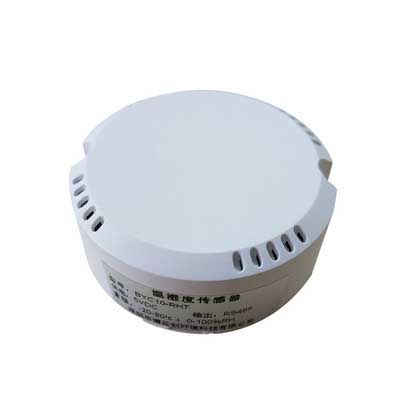Definition of absolute humidity sensor
- PRODUCT DETAIL
What is an absolute humidity sensor?
Experts explain the knowledge of humidity sensors. Temperature: Measure the physical quantity of an object. It is one of the 7 basic physical quantities in the International System of Units. In production and scientific research, many physical phenomena and chemical processes are carried out at a certain temperature, and people's lives are also closely related to him.

Humidity: Humidity has a close relationship with life long ago, but it is more difficult to express it in terms of quantity. The most commonly used physical quantity for humidity in daily life is the relative humidity of the air. Expressed as% RH. Relative humidity is closely related to temperature in the derivation of physical quantities. The higher the temperature of a certain volume of closed gas, the lower the relative humidity, and the lower the temperature, the higher the relative humidity. This involves complex thermal engineering knowledge.
Absolute humidity: Refers to the amount of water vapor actually contained in a unit volume of air, usually in grams. Temperature has a direct effect on absolute humidity. In general, the higher the temperature, the more water vapor is emitted, and the greater the absolute humidity;
In contrast, the absolute humidity is small.
Saturated humidity: The maximum amount of water vapor that can be contained in the air per unit volume at a certain temperature. If this limit is exceeded, excess water vapor will condense and become water droplets. At this time, the humidity of the air will be called saturation humidity. The saturated humidity of air is not fixed, it changes with the temperature. The higher the temperature, the more water vapor can be contained in a unit volume of air and the greater the saturated humidity.
Dew point: Refers to air containing a certain amount of water vapor (absolute humidity). When the temperature drops to a certain level, the water vapor contained will reach a saturated state (saturated humidity) and begin to liquefy into water. This phenomenon is called condensation. The temperature at which water vapor begins to liquefy into water is called "dew point temperature" or "dew point" for short. If the temperature continues to drop below the dew point, supersaturated water vapor in the air will condense into water droplets on the surface of the object. In addition, wind is closely related to the temperature and humidity in the air, and it is also one of the important factors affecting the change of air temperature and humidity.
The purpose of the humidity sensor:
Microwave oven humidity control, clothes dryer humidity detection, oven intelligent humidity control, industrial measurement, air conditioning humidity control, physical and chemical instruments, steam bath and other on-site humidity detection.
Experts explain the knowledge of humidity sensors. Temperature: Measure the physical quantity of an object. It is one of the 7 basic physical quantities in the International System of Units. In production and scientific research, many physical phenomena and chemical processes are carried out at a certain temperature, and people's lives are also closely related to him.

Humidity: Humidity has a close relationship with life long ago, but it is more difficult to express it in terms of quantity. The most commonly used physical quantity for humidity in daily life is the relative humidity of the air. Expressed as% RH. Relative humidity is closely related to temperature in the derivation of physical quantities. The higher the temperature of a certain volume of closed gas, the lower the relative humidity, and the lower the temperature, the higher the relative humidity. This involves complex thermal engineering knowledge.
Absolute humidity: Refers to the amount of water vapor actually contained in a unit volume of air, usually in grams. Temperature has a direct effect on absolute humidity. In general, the higher the temperature, the more water vapor is emitted, and the greater the absolute humidity;
In contrast, the absolute humidity is small.
Saturated humidity: The maximum amount of water vapor that can be contained in the air per unit volume at a certain temperature. If this limit is exceeded, excess water vapor will condense and become water droplets. At this time, the humidity of the air will be called saturation humidity. The saturated humidity of air is not fixed, it changes with the temperature. The higher the temperature, the more water vapor can be contained in a unit volume of air and the greater the saturated humidity.
Dew point: Refers to air containing a certain amount of water vapor (absolute humidity). When the temperature drops to a certain level, the water vapor contained will reach a saturated state (saturated humidity) and begin to liquefy into water. This phenomenon is called condensation. The temperature at which water vapor begins to liquefy into water is called "dew point temperature" or "dew point" for short. If the temperature continues to drop below the dew point, supersaturated water vapor in the air will condense into water droplets on the surface of the object. In addition, wind is closely related to the temperature and humidity in the air, and it is also one of the important factors affecting the change of air temperature and humidity.
The purpose of the humidity sensor:
Microwave oven humidity control, clothes dryer humidity detection, oven intelligent humidity control, industrial measurement, air conditioning humidity control, physical and chemical instruments, steam bath and other on-site humidity detection.











